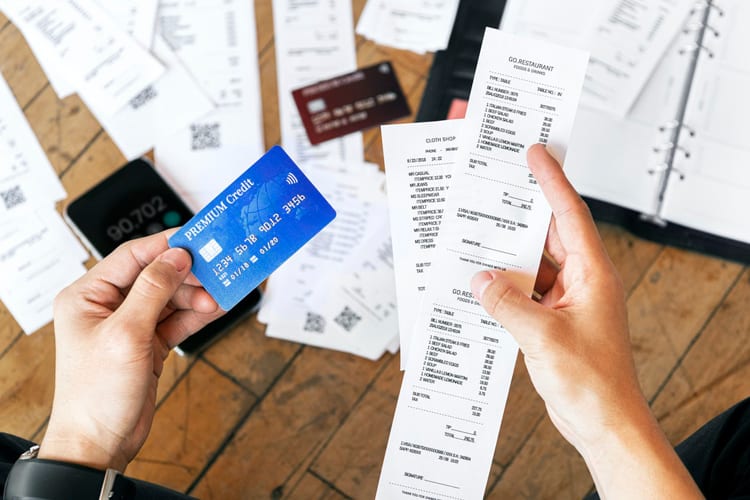Credit Card Debt is Increasing Amid the Pandemic, Study Shows

While it will be years before we know the full economic and social impact of COVID-19, we’re starting to learn new things throughout the year. For instance, the Congressional Budget Office gave the first look in July at how the economy will be shaped by this virus for the next decade.
We also know more about how the virus is impacting individuals. A majority of young adults suffered work disruption, as a recent Smart Wallet survey showed, and according to a CreditCards.com poll, it turns out that credit card debt is rising as well.
Americans’ Debt Amid the Coronavirus
Overall, the results of CreditCards.com’s survey on debt were a bit bleak. Across the country, they found that 47 percent of Americans have credit card debt, a tick up from 43 percent in March. Of those with existing debt, a quarter said they added to it.
Among generations, Millennials faced the toughest challenges with debt. Roughly one in three Millennials said they are in more debt than they were before the pandemic. Unfortunately, that stat is unsurprising considering how many young adults lost wages as a result of the pandemic. For comparison, only 15 percent of Baby Boomers had taken on additional debt.
In addition, roughly half of Americans with outstanding credit card debt said they felt stressed by it. That includes a majority of Millennials, parents, and low-income households. Not only is credit card debt impacting our wallets, but it’s also hurting our mental health too.
How to Handle Credit Card Debt
A few weeks ago, we talked about how college students were handling their finances during the pandemic. Although many students are struggling, some have turned their hardships into an opportunity to learn more about money management. Ideally, anyone struggling with credit card debt can take steps to do the same and gain more control over their debt.
We have plenty of resources that can help debtors stay on their feet and keep a level head:
- How to Deal With Debt Collectors
- How and Why to Consolidate Debt
- Credit Card Debt Haunting You? Here’s a 5-Step Plan to Eradicate It
- Step-by-Step Guide to the Debt Avalanche Plan for Debt Relief
- Step-by-Step Guide to the Debt Snowball Plan for Debt Relief
- 10 Simple Ways to Pay Off Debt with Little Effort
- How to Get Out of Credit Card Debt
Everyone’s debt is different, and there’s no catchall answer to solve everyone’s. The best thing to do is research debt relief methods and plans and find what works best for your financial situation.
Financial literacy is just one part of the answer, though. During the pandemic, overcoming debt is more difficult than usual. If you’re still unemployed, furloughed, or losing hours, your debt isn’t going to get better until the overall situation starts to turn around.
Still, there are other tactics you can try to find relief from COVID-19 related debt. You can contact your loan servicer and negotiate a lower interest rate or enter into a hardship program. Some lenders may even let you skip or miss payments without hurting your credit score. Many banks and lending institutions have COVID-specific hardship assistance, so there are ways to get help.
The Bottom Line
Credit card debt continues to grow in America, and that trend will likely continue until the end of the pandemic. People struggling with debt have a few options to fight back, but many will be unable to do so without greater economic recovery. With that in mind, it’s always a good idea to stay up to date on the latest stimulus news, in case additional unemployment benefits or stimulus checks are coming after the election.










